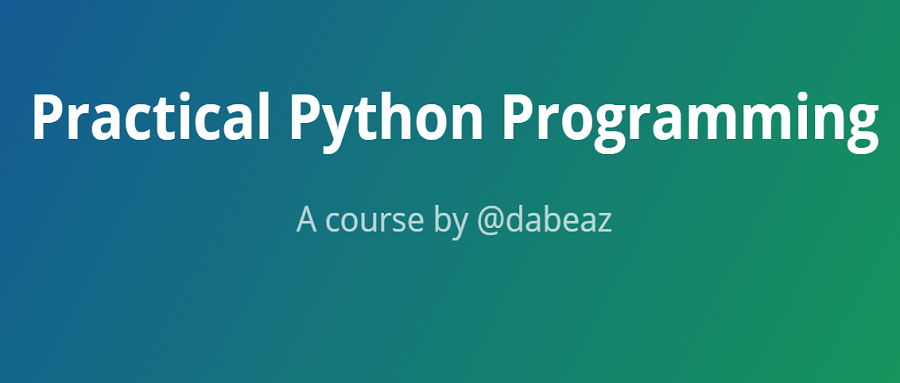目录 | 上一节 (8.2 日志) | 下一节 (9 包)
8.3 调试
调试建议
假设程序崩溃了:
bash % python3 blah.pyTraceback (most recent call last): File "blah.py", line 13, in ? foo() File "blah.py", line 10, in foo bar() File "blah.py", line 7, in bar spam() File "blah.py", 4, in spam line x.append(3)AttributeError: 'int' object has no attribute 'append'
复制代码
那么现在该怎么办呢?
阅读回溯信息
最后一行是程序崩溃的具体原因:
bash % python3 blah.pyTraceback (most recent call last): File "blah.py", line 13, in ? foo() File "blah.py", line 10, in foo bar() File "blah.py", line 7, in bar spam() File "blah.py", 4, in spam line x.append(3)# Cause of the crashAttributeError: 'int' object has no attribute 'append'
复制代码
不过,回溯信息并不总是那么易于阅读或理解。
专业建议:将整个回溯粘贴到谷歌。
使用交互式解释器(REPL)
执行脚本的 时候,可以使用选项 -i 使 Python 保持存活(keep alive)。
bash % python3 -i blah.pyTraceback (most recent call last): File "blah.py", line 13, in ? foo() File "blah.py", line 10, in foo bar() File "blah.py", line 7, in bar spam() File "blah.py", 4, in spam line x.append(3)AttributeError: 'int' object has no attribute 'append'>>>
复制代码
选项 -i 可以保留解释器状态。这意味着可以在程序崩溃后查找错误信息。对变量的值和其它状态进行检查。
使用打印进行调试
使用 print() 函数进行调试非常常见。
建议:确保使用的是 repr() 函数。
def spam(x): print('DEBUG:', repr(x)) ...
复制代码
repr() 函数显示一个值的准确表示,而不是格式良好的输出。
>>> from decimal import Decimal>>> x = Decimal('3.4')# NO `repr`>>> print(x)3.4# WITH `repr`>>> print(repr(x))Decimal('3.4')>>>
复制代码
Python 的调试器
可以在程序内手动启动调试器(debugger)。
def some_function(): ... breakpoint() # Enter the debugger (Python 3.7+) ...
复制代码
上述操作会在 breakpoint() 调用时启动调试器。
在 Python 的早期版本中,可能会看到下面这样的调试指南:
import pdb...pdb.set_trace() # Instead of `breakpoint()`...
复制代码
(译注:Python 3.7 之后,可以使用内置函数 breakpoint() 代替 import pdb; pdb.set_trace())
在调试解释器下运行程序
也可以在调试器下运行整个程序:
bash % python3 -m pdb someprogram.py
复制代码
上述操作会在第一行语句之前自动进入调试器,允许设置断点和修改配置。
常见的调试器命令:
(Pdb) help # Get help(Pdb) w(here) # Print stack trace(Pdb) d(own) # Move down one stack level(Pdb) u(p) # Move up one stack level(Pdb) b(reak) loc # Set a breakpoint(Pdb) s(tep) # Execute one instruction(Pdb) c(ontinue) # Continue execution(Pdb) l(ist) # List source code(Pdb) a(rgs) # Print args of current function(Pdb) !statement # Execute statement
复制代码
断点的位置可以用下列任意一种方式进行表示:
(Pdb) b 45 # Line 45 in current file(Pdb) b file.py:45 # Line 34 in file.py(Pdb) b foo # Function foo() in current file(Pdb) b module.foo # Function foo() in a module
复制代码
练习
练习 8.4:Bugs? 什么是 Bugs?
有 bug,我们就解决 bug(It runs. Ship it!)。
目录 | 上一节 (8.2 日志) | 下一节 (9 包)
注:完整翻译见 https://github.com/codists/practical-python-zh













评论